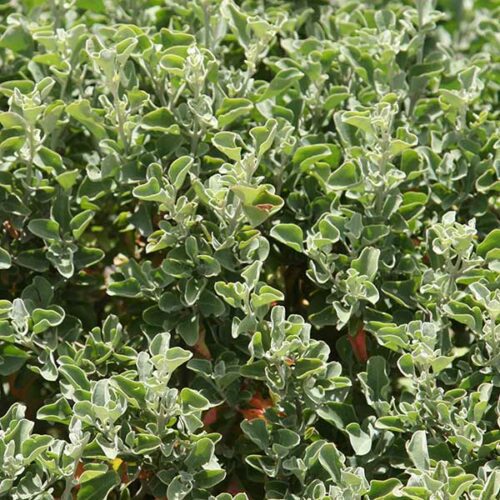Commonly called the fragrant saltbush Rhagodia parabolica now named Chenopodium parabolicum is grown as a foliage plant.

It is fast growing, suited for use as a low hedge or as a filler in the native garden border and is very easy care.
The foliage is a grey-green and the flowers appear sporadically through the year. This is a widely found plant, from South Australia and Victoria through to the Northern Territory.
How to Grow Rhagodia parabolica
This is plant that grows well in coastal conditions any and loam type soils are best.
- Plant in full sun
- A free draining soil is essential
- Pruning to maintain shape can be done in spring.
More Information
- Rhagodia parabolica will reach around 2m in height with a similar spread. It has a very dense growth habit and makes a good habitat plant for small birds, lizards and other small animals.
- The young leaves are edible and have a very salty taste. Boiling and rinsing repeatedly can help reduce the salt content.
- Other Species include Rhagodia spinescens (Look for the named variety ‘Aussie Flat Bush’)which is lower growing and be used a a Native Ground Cover Plant.
